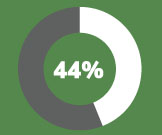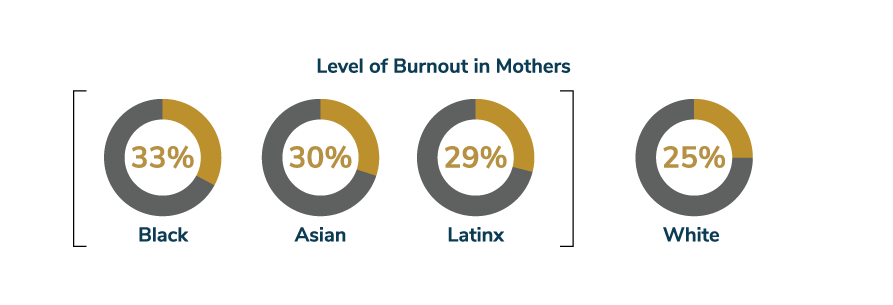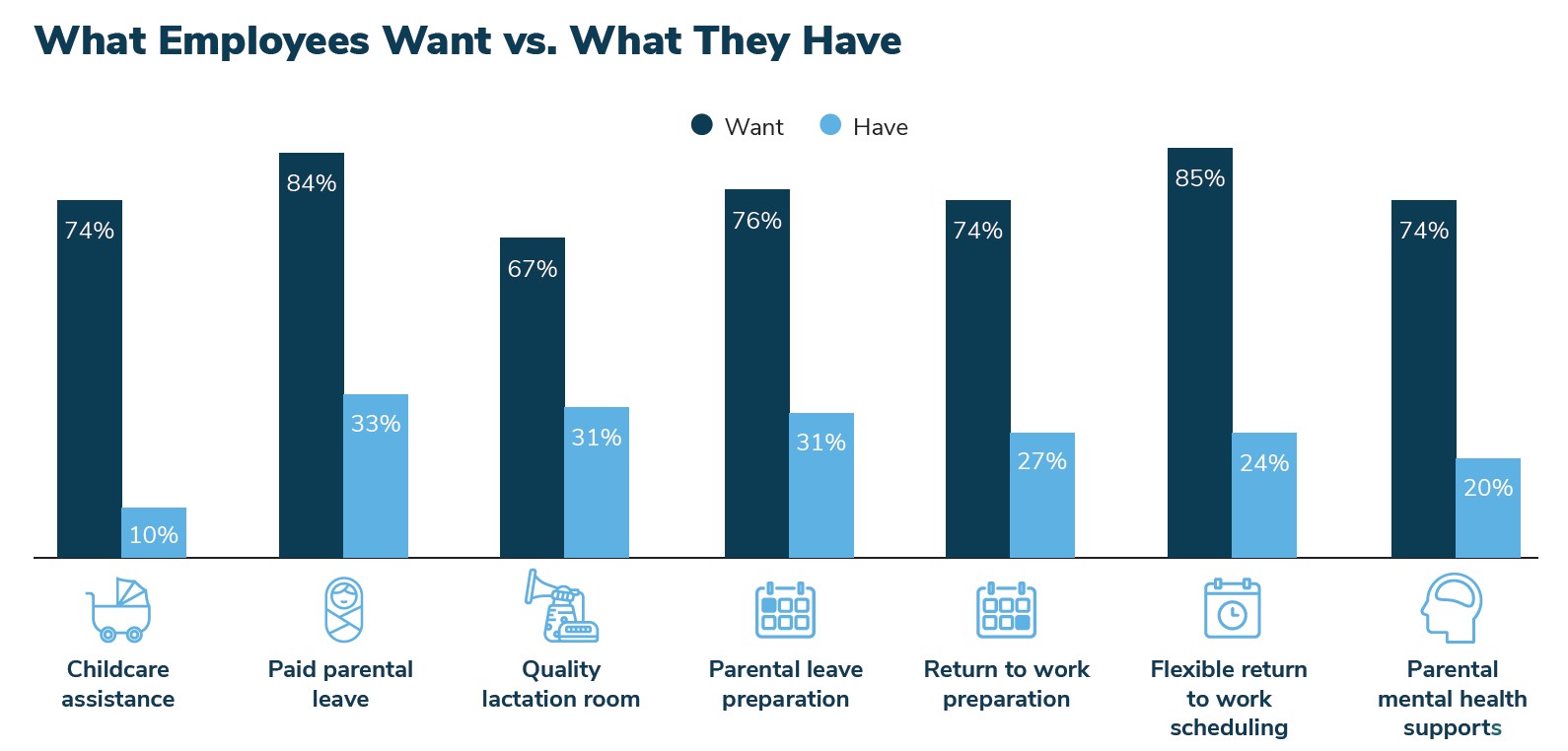November 11, 2022
Globally, the pandemic drove working parents and caregivers out of the workforce. This burden fell disproportionately on women, and moreover, BIPOC women experienced greater unemployment than White women. In the U.S., when many schools started virtually in 2020, 80% of the 1.1 million people who exited the workforce were women.1 Overall, women lost nearly 2 million net jobs and men lost nearly 1.6 million since the start of the pandemic.2
Many countries share a similar struggle. During the pandemic, more than 6.5 million women in Brazil exited the workforce, reducing their participation rate from 53% to 48%, the lowest it’s been in over 10 years.3 In Italy, COVID-19 resulted in a she-cession, with women’s employment rate decreasing from 56.5% in years prior to the pandemic to a record low of 47.5% during the second quarter in 2020.4 And while South Korea has been widely applauded for its success in navigating the COVID-19 crisis, women accounted for 60% of the 1.8% increase in unemployment, and over half the women in South Korea reported an increase in family responsibilities.5
Employers can play a key role in retaining and supporting the well-being of employees with parenting and caregiving responsibilities—and bringing those who left the workforce back—by offering needed, inclusive benefits that support the diverse experiences of employees and their families. Recent results from Ovia Health’s The Future of Family Friendly Benefits survey shed light on the value of investing in family-friendly benefits and the employee experience.
Being Family-Friendly Matters

Seventy-seven percent of employees say it’s very important that their employer is family-friendly, but only 58% believe their company is a good place to work for new parents and during pregnancy (theirs or their partner’s) only 53% felt supported by their employer.
More Can Be Done to Keep Parents and Caregivers

Forty-four percent of employees who left felt their employers could have done things differently to keep them. Moreover, one third of all U.S. employees have left a job during their career to manage an unmet caregiving responsibility, and 72% say they wish their employer offered more flexibility.6,7
Parents Will Leave for Better Benefits

Fifty-seven percent of parents said they would leave their current employer if a similar employer with better family benefits offered them a similar job at a similar salary. Only 35% of new parents who returned to their employers after parental leave indicated that it was because they loved their job/working for their employer.
A Culturally Conscious Lens
Cultural attitudes toward health and health care services often inform how and when individuals interact with the health care delivery system. Evaluating your family benefit strategy with an eye toward cultural consciousness and providing culturally relevant benefit offerings can increase engagement and improve overall health outcomes. Alarmingly, many respondents to Ovia Health’s The Future of Family Friendly Benefits survey were unaware of inclusive benefit efforts. Thirty-one percent were unsure if their employer had Diversity, Equity and Inclusion (DEI) programming, and more specifically, 41% were unsure about LGBTQ+ programming. Also, two-thirds of BIPOC respondents said having tailored programs to improve health for diverse populations would be helpful.
Review Business Group on Health’s Evaluating Your Health and Well-being Benefits with a Culturally Concious Lens for steps employers should consider as they strive to communicate about and provide culturally competent services.
What is family?
The definition of family is changing to reflect the diversity of family structures that exist across the globe, including families with a single-parent, same-sex parents or heterosexual parents, married or unmarried parents, blended families, grandfamilies, adoptive families, multigenerational families, cohabiting families and more. Furthermore, many individuals today, including two-thirds of LGBTQ+ people, consider friends as part of their family, often referred to as their chosen family.
Leading employers are expanding the definition of family in their policies and benefits to be more equitable and inclusive. For example, in 2021, Google updated their definition of family globally to be “loved ones."
Family Health is a Business Imperative
Business and Workforce Outcomes
Profitability, Innovation and Morale
Companies that invest in family well-being see 5.5x more revenue growth, greater innovation, higher talent retention and increased productivity.9
More than 90% of employers offering paid family medical leave felt the effect was positive or neutral on profitability, productivity and morale.10
Diversity, Equity and Inclusion
Supporting the diverse experiences of parents, caregivers and families goes in tandem with employer goals to advance diversity, equity and inclusion (DEI). For example, Black, Asian and Latinx mothers experience greater burnout than White mothers.

Designing solutions that focus on centering and improving the wellbeing of BIPOC women often benefits everyone and builds a more equitable, inclusive suite of benefits for parents.9
For current and future LBGTQ+ employees who want to have children or transition to another gender, the right benefits are critical to their physical, financial and mental health.
Health Care Costs
![]() Breastfeeding is associated with reduced risk of health problems, such as asthma, obesity, type 2 diabetes and sudden infant death syndrome.11
Breastfeeding is associated with reduced risk of health problems, such as asthma, obesity, type 2 diabetes and sudden infant death syndrome.11
The Future Workforce
![]() Managing work and personal commitments was a top well-being priority for Gen Z (#3) and Millennials (#2).12
Managing work and personal commitments was a top well-being priority for Gen Z (#3) and Millennials (#2).12
Family Health and Well-being
Overall Mental Health
67% of employers identified increased caregiving demands as the top driver of employee mental health concerns.13
And for good reason—70% of parents and/or caregivers report at least one mental health symptom compared to 32% of the nonparent/non-caregiver population. Caregivers will benefit from support and mental health resources—those who had greater support had lower odds of experiencing any adverse mental health symptoms.14
![]() Furthermore, women who took a maternity leave longer than 12 weeks reported fewer depressive symptoms and, when leave was paid, mothers experienced an improvement in overall mental health.15
Furthermore, women who took a maternity leave longer than 12 weeks reported fewer depressive symptoms and, when leave was paid, mothers experienced an improvement in overall mental health.15
Vaccination Rates
![]() When mothers stay home for at least 12 weeks after giving birth their children have a greater likelihood of receiving all the recommended vaccinations.16
When mothers stay home for at least 12 weeks after giving birth their children have a greater likelihood of receiving all the recommended vaccinations.16
Breastfeeding Duration
![]() Women are more likely to breastfeed when they take maternity leave, and longer leave increases the likelihood of and duration of breastfeeding.10
Women are more likely to breastfeed when they take maternity leave, and longer leave increases the likelihood of and duration of breastfeeding.10
Cohesive Family Life
![]() Fathers’ early involvement leads to a more cohesive family life and reduced divorce rates.17,18 In addition, fathers who take leave around childbirth are more likely to be involved in childcare later in the child’s life.19
Fathers’ early involvement leads to a more cohesive family life and reduced divorce rates.17,18 In addition, fathers who take leave around childbirth are more likely to be involved in childcare later in the child’s life.19
A Global Approach to Family Well-being
Designing a global family benefits approach requires employers to act globally and locally. While a top challenge is compliance with regularly changing legal requirements, employers must also consider market trends and cultural preferences to attract and retain the right talent across the globe.
Top Challenges
Legal Minefield
Mandates impacting employer benefits vary across and within countries and are ever evolving. And sometimes they can conflict with company values, such as DEI commitments. For example, in China, single women are not allowed to freeze their eggs.
Government Benefits
Benefits available from country and local governments vary. Most countries come with strengths and weakness. For example, several countries have generous parental leaves for moms but offer little or no leave for new dads.
Cultural Differences
Subtle and complex differences in values, norms and behaviors exist when working across borders. Offering benefits equally does not mean utilization will be equal. For example, in some areas men may be less likely to take available parental leave.
Employee Desires
Employees want—and need—different things from their employers in different regions.
Company Benefits
Without a global strategy in place, individual localities create and implement different company benefits and practices which can be difficult to harmonize.
![]()
Market Practices
What’s considered a rich benefit in one region may be less than desirable in another.
Getting Started: Global Employer Recommendation
- Obtain full leadership support to develop and implement a globally consistent benefit approach for working parents and caregivers.
- Establish an internal team or partner with a consultant to identify and regularly monitor legal requirements, market benchmarks, and local company benefits/policies where the current (and future) workforce is located.
- Get the right people involved, including HR, legal, finance and IT.
- Adapt to cultural norms and practices; start by learning from local HR teams, managers and employees through surveys, focus groups and one-on-one communication.
- Determine global strategy design principles, such as benefit minimums and ceilings.
- Consider and ensure proper alignment with IT systems (e.g., payroll, HRIT, attendance).
- 1 | Ewing-Nelson C. Four times more women than men dropped out of the labor force in September. National Women’s Law Center. October 2020. https://nwlc.org/wp-content/uploads/2020/10/september-jobs-fs1.pdf. Accessed June 2, 2021.
- 2 | Ewing-Nelson C, Tucker J. Women need 28 months of job gains in April’s level to recover their pandemic loses. National Women’s Law Center. May 2021. https://nwlc.org/wp-content/uploads/2021/05/April-Jobs-Day-Final-2.pdf. Accessed June 2, 2021.
- 3 | The Associated Press. In Brazil, women are bearing the brunt of the COVID-19 pandemic’s blow, at home and at work. Firstpost. March 29, 2021. https://www.firstpost.com/world/in-brazil-women-are-bearing-the-brunt-of-the-covid-19-pandemics-blow-at-home-and-at-work-9475881.html. Accessed August 4, 2021.
- 4 | Policy Department for Citizens’ Rights and Constitutional Affairs. COVID-19 and its economic impact on women and women’s poverty: Insights from 5 European countries. May 2021. https://www.europarl.europa.eu/RegData/etudes/STUD/2021/693183/IPOL_STU(2021)693183_EN.pdf. Accessed August 4, 2021.
- 5 | Jones R. The impact of the pandemic on women in the Korean labor market. Korea Economic Institute of America. May 7, 2021. https://keia.org/the-peninsula/the-impact-of-the-pandemic-on-women-in-the-korean-labor-market/. Accessed August 3, 2021.
- 6 | Fuller JB, Raman M. The caring company. Harvard Business School. January 27, 2019. https://www.hbs.edu/managing-the-future-of-work/Documents/The_Caring_Company.pdf. Accessed August 5, 2021.
- 7 | Fidelity Investments. 2021 American caregivers study. 2021. https://s2.q4cdn.com/997146844/files/doc_news/2021/06/08/Fidelity-Caregivers-Study-Fact-Sheet-2021_final.pdf. Accessed August 9, 2021.
- 8 | Hull KE, Ortyl, TA. Conventional and cutting-edge: Definitions of family in LGBTQ communities. Sexuality Research and Social Policy. 2019;16:31-43.
- 9 | Maven and Great Place to Work. Parents at the best workplaces. 2020. https://info.mavenclinic.com/pdf/parents-at-the-best-workplaces?submissionGuid=e7b4f083-f318-4804-8404-d92da93c01c4. Accessed August 31, 2021.
- 10 | Appelbaum E, Milkman R. Leaves that pay: Employer and worker experiences with paid family leave in California. Center for Economic and Policy Research. 2011.
- 11 | Department of Health and Human Services, Office of the Surgeon General. The Surgeon General’s Call to Action to Support Breastfeeding. Washington, DC. 2011.
- 12 | Business Group on Health. 2021 employee well-being mindset study. May 13, 2021. https://www.businessgrouphealth.org/resources/2021-employee-wellbeing-mindset-study. Accessed July 13, 2021.
- 13 | Willis Towers Watson. 2021 emerging from the pandemic survey. February 24, 2021. https://www.willistowerswatson.com/en-US/Insights/2021/02/2021-emerging-from-the-pandemic-survey. Accessed August 9, 2021.
- 14 | Czeisler ME, Rohan EA, Melillo S, Matjasko JL, Depadilla L, Patel CG, et al. Mental health among parents and children aged <18 years and unpaid caregivers of adults during the COVID-19 pandemic. Centers for Disease Control and Prevention Morbidity and Mortality Weekly Report. Jun 18, 2021. https://www.cdc.gov/mmwr/volumes/70/wr/mm7024a3.htm?s_cid=mm7024a3_w. Accessed July 13, 2021.
- 15 | Chatterji P, Markowitz S., Brooks-Gunn J. Early maternal employment and family wellbeing. Cambridge, MA: National Bureau of Economic Research; July 2011.
- 16 | Berger LM, Hill J, Waldfogel J. Maternity leave, early maternal employment and child health and development in the U.S. The Economic Journal. 2005;115(501):F29-F47.
- 17 | Steingrimsdottir H, Vardardottir A. Domestic equality and marital stability: Does more equal sharing of childcare affect divorce risk? Paper presented at European Economic Association & Econometric Society. 2014.
- 18 | Sigle-Rushton W. Men’s unpaid work and divorce: reassessing specialization and trade in British families. Feminist Economics. 2010;16(2): 1-26.
- 19 | Nepomnyaschy L, Waldfogel J. Paternity leave and fathers’ involvement with their young children: Evidence from American ECLS-B. Community, Work & Family. 2007;10:427-453.
-
Full GuideThe Family Benefits Bundle: Full Guide
-
Part 1The Family Benefits Bundle: Introduction
-
Part 2The Family Benefits Bundle: Family Building
-
Part 3The Family Benefits Bundle: Family Transitions
-
Part 4The Family Benefits Bundle: Parenting and Childcare
-
Part 5The Family Benefits Bundle: Caregiving
More Topics
Articles & Guides
This content is for members only. Already a member?
Login
![]()

